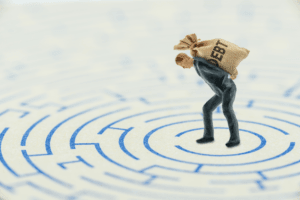
Assets, liabilities, and equity are the three primary components of a balance sheet. Assets are the resources owned by a company, such as cash, equipment, and inventory. Liabilities are the obligations of the company, such as loans, accounts payable, and other debts.
How is Owner’s Equity Calculated?
- A company is said to be self-reliant if it depends more on equity than on external parties like creditors.
- That part of the accounting system which contains the balance sheet and income statement accounts used for recording transactions.
- The 500 year-old accounting system where every transaction is recorded into at least two accounts.
- The value of the owner’s equity is increased when the owner or owners (in the case of a partnership) increase the amount of their capital contribution.
- The difference of $500 in the cash discount would be added to the owner’s equity.
- The remainder is the shareholders’ equity, which would be returned to them.
That includes the $20,000 Rodney initially invested in the business, the $75,000 he took out of the company, and the $150,000 of profits from this year’s operations. Calculated by subtracting your liabilities from your assets, owner’s equity is what would be left over if you liquidated your business and paid off any debts. That part of the accounting system https://www.bookstime.com/ which contains the balance sheet and income statement accounts used for recording transactions. Let’s assume that Jake owns and runs a computer assembly plant in Hawaii and he wants to know his equity in the business. The balance sheet also indicates that Jake owes the bank $500,000, creditors $800,000 and the wages and salaries stand at $800,000.
Breaking Down The Balance Sheet
Creditors have preferential rights over the assets of the business, and so it is appropriate to place liabilities before the capital or owner’s equity in the equation. However, due to the fact that accounting is kept on a historical basis, the equity is typically not the net worth of the organization. Often, a company may depreciate capital assets in assets = liabilities + owners equity 5–7 years, meaning that the assets will show on the books as less than their “real” value, or what they would be worth on the secondary market. It may also be known as shareholder’s equity or stockholder’s equity if the business is structured as an LLC or a corporation. Owner’s equity is essentially the owner’s rights to the assets of the business.

Part 2: Your Current Nest Egg
Shareholders consider this to be an important metric because the higher the equity, the more stable and healthy the company is deemed to be. The difference between total assets and total liabilities on the stockholders’ equity statement is usually measured monthly, quarterly, or annually. It can be found on the balance sheet, one of three essential financial documents for all small businesses. If negative, the company’s liabilities exceed its assets; if prolonged, this is considered balance sheet insolvency.
- The major and often largest value assets of most companies are that company’s machinery, buildings, and property.
- In addition, shareholder equity can represent the book value of a company.
- For example, if a company purchases a vehicle for $40,000 and expects it to last for five years, it might depreciate the vehicle at a rate of $8,000 per year.
- These liquid assets can be easily converted into cash, and they include items such as bank deposits, marketable securities, and money market funds.
- The income statement reports the revenues, gains, expenses, losses, net income and other totals for the period of time shown in the heading of the statement.
What’s Included in Owner’s Equity?

A balance sheet represents a company’s financial position for one day at its fiscal year end, for example, the last day of its accounting period, which can differ from our more familiar calendar year. Companies typically select an ending period that corresponds to a time when their business activities have reached the lowest point in their annual cycle, which is referred to as their natural business year. For example, even the balance sheet has such alternative names as a “statement of financial position” and “statement of condition.” Balance sheet accounts suffer from this same phenomenon. Fortunately, investors have easy access to extensive dictionaries of financial terminology to clarify an unfamiliar account entry. Shareholder’s equity refers to the amount of equity that is held by the shareholders of a company, and it is sometimes referred to as the book value of a company.

An asset can be cash or something that has monetary value such as inventory, furniture, equipment etc. while liabilities are debts that need to be paid in the future. For example, if you have a house then that is an asset for you but it is also a liability because it needs to be paid off in the future. This transaction would reduce cash by $9,500 and accounts payable by $10,000. The difference of $500 in the cash discount would be added to the owner’s equity. On 12 January, Sam Enterprises pays $10,000 cash to its accounts payable.
Owner’s Equity
Assets represent things of value that a company owns and has in its possession, or something that will be received and can be measured objectively. Liabilities are what a company owes to others—creditors, suppliers, tax authorities, employees, etc. They are obligations that must be paid under certain conditions and time frames. Accounting equation describes that the total value of assets of a business entity is always equal to its liabilities plus owner’s equity. This equation is the foundation of modern double entry system of accounting being used by small proprietors to large multinational corporations.
Other names used for this equation are balance sheet equation and fundamental or basic accounting equation. A company usually must provide a balance sheet to a lender in order to secure a business loan. A company must also usually provide a balance sheet to private investors when attempting to secure private equity funding. In both cases, the external party wants to assess the financial health of a company, the creditworthiness of the business, and whether the company will be able to repay its short-term debts.
- By assessing these financial ratios, investors and stakeholders can make informed decisions about the company’s performance and potential growth.
- Following company financials is important, not only before you invest, but also on an ongoing basis.
- For a homeowner, equity would be the value of the home less any outstanding mortgage debt or liens.
- Owner’s equity is determined by subtracting a company’s total liabilities from its total assets.
- To analyze the financial health of a company, it is essential to understand its revenue performance, cost management, and profitability.
- Owner’s equity is the value of assets left in a business after subtracting the amount of its liabilities.


